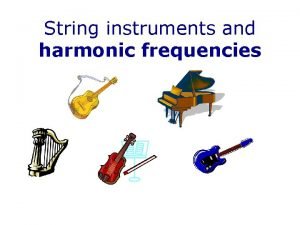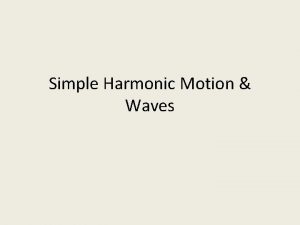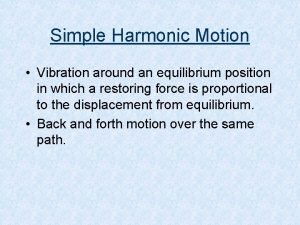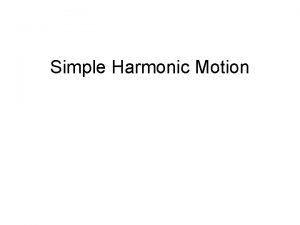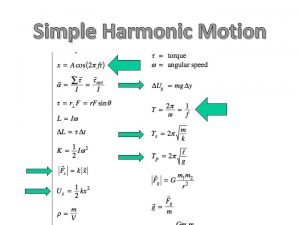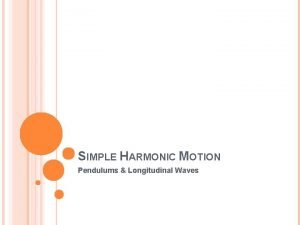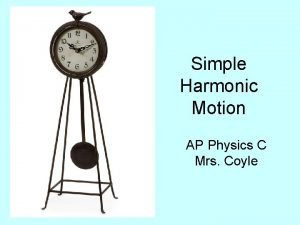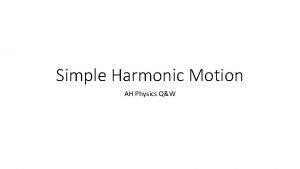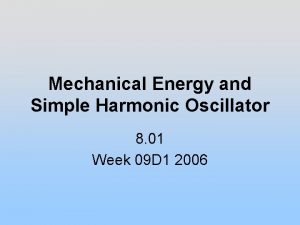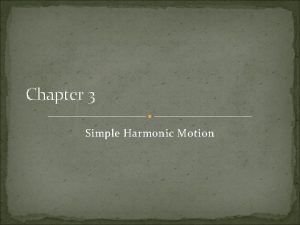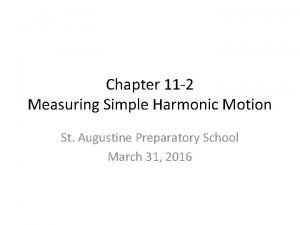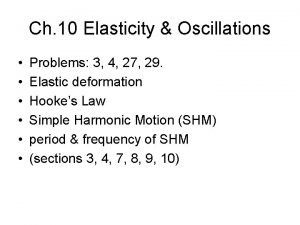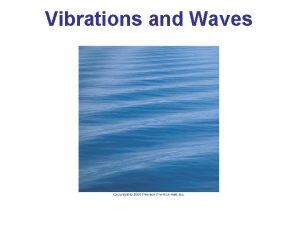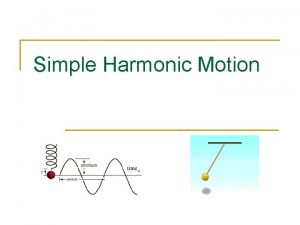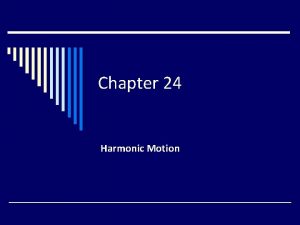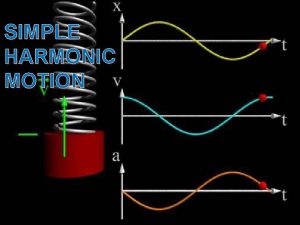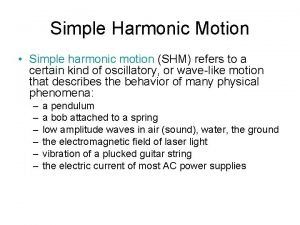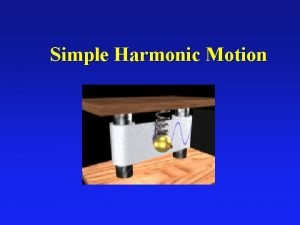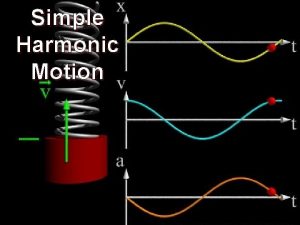Simple Harmonic Motion Periodic Motion Simple periodic motion














- Slides: 14

Simple Harmonic Motion

Periodic Motion Simple periodic motion is that motion in which a body moves back and forth over a fixed path, in a regular, constant fashion. The simplest example is an object bouncing on a spring. x F

Simple Harmonic Motion, SHM In this type of motion, there must be a restoring force that causes the motion to repeat over and over again. In this case, gravity pulls the object down while the spring (restoring force) pulls it back up. x F A restoring force, F, acts in the direction opposite the displacement of the oscillating body.

Hooke’s Law When a spring is stretched, there is a restoring force that is proportional to the displacement. F = -kx x m F The spring constant k is a property of the spring given by:

Example : A 4 -kg mass suspended from a spring produces a displacement of 20 cm. What is the spring constant? The stretching force is the weight (W = mg) of the 4 -kg mass: 20 cm F = (4 kg)(9. 8 m/s 2) = 39. 2 N Now, from Hooke’s law, the force constant k of the spring is: F m

Periodic Motion What is Period? Period, T, is the time for one complete oscillation. (seconds, s) Period (T) equals the Total time divided by the Number of cycles.

Periodic Motion What is Frequency? Frequency, f, is the number of complete oscillations per second. Hertz (Hz)

Example 1: The suspended mass makes 30 complete oscillations in 15 s. What is the period and frequency of the motion? x F Period: T = 0. 500 s Frequency: f = 2. 00 Hz


Simple Harmonic Motion What is Amplitude? This maximum displacement from the equilibrium position is the amplitude. Amplitude

Measures of Simple Harmonic Motion

The Simple Pendulum The period of a simple pendulum is given by: L For small angles q. mg

Example. What must be the length of a simple pendulum for a clock which has a period of two seconds (tick-tock)? L L = 0. 993 m

 Simple harmonic motion equation of motion
Simple harmonic motion equation of motion Wave
Wave Simple harmonic motion vocabulary
Simple harmonic motion vocabulary The highest point above the equilibrium position
The highest point above the equilibrium position Si unit of spring constant k
Si unit of spring constant k Reference circle shm
Reference circle shm What unit is period measured in
What unit is period measured in Harmonic motion examples
Harmonic motion examples Period of simple harmonic motion
Period of simple harmonic motion Q=qmax cos wt
Q=qmax cos wt Mechanical energy
Mechanical energy Euler cromer method pendulum
Euler cromer method pendulum A 125 n object vibrates
A 125 n object vibrates Frequency of shm
Frequency of shm Simple harmonic motion formula
Simple harmonic motion formula

